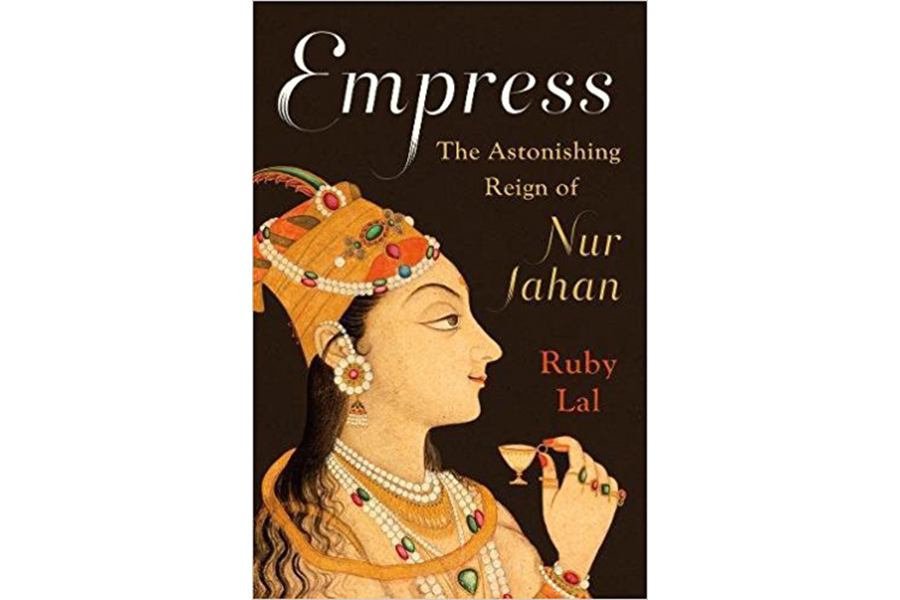Ruby Lal, author of 'Empress,' discusses the amazing life and reign of Nur Jahan
Loading...
If you grew up in South Asia, the lush 17th-century romance of a captivating young widow and a Moghul emperor is likely as familiar to you as Romeo & Juliet are in the West.
They meet, and she wows the ruler of tens of millions of people with her beauty, wit, and fearlessness. Wise and savvy, she becomes his beloved 20th wife and goes on to live an extraordinary life. She writes poetry, designs gardens and buildings, and even saves a village by hunting down and killing four dangerous tigers with six shots.
That's as far as the legend and the history books tend to go. But there's much more to the story, as historian Ruby Lal reveals in her fascinating new book Empress: The Astonishing Reign of Nur Jahan.
While some historians dismiss the idea that Nur Jahan was anything but a royal consort, Lal contends that she served as co-sovereign with her husband while living in a harem. In a culture of male dominance, Lal writes, "a new kind of power was on display."
"The basic facts," Lal said in a Monitor interview, "are pretty astounding. To put it plainly, she was the one woman we can count among the great rulers of India."
Q: Could you talk a bit about the Moghul empire, whose name inspired the word "mogul"?
The Moghuls were descendants of Genghis Khan and Tamerlane [a conquerer also known as also known as Timur and Amir Timur].
This was a pre-nation time, when the borders and territories that are the hallmark of modern nations do not exist. The area that we're talking about encompasses many different parts of Central Asia, places like Afghanistan, Iran, and India.
Q: What drew you to Nur Jahan, a Shiite Muslim from an immigrant Iranian family who marries a Sunni Muslim who is half-Hindu?
This is a woman who was clearly bold, independent, and very inventive in challenging the norm in quite extraordinary ways.
For me as a historian of India, the empress is not an add-on. She is the story of India. Once you know about people like her, you turn your head and see things differently. You see a place of creative, living, dynamic, influential women.
Q: How did you approach writing about her?
It's a delicate balance when it comes to writing about history and legend.
There is a vivacious public imagination about this story. People talk about extraordinary she was, how beautiful she was, and how she fell in love in 1611.
I didn't undo the legends. But I distilled them, thinking through her sovereignty, what was it that made her a sovereign.
She was powerful, she issued coins, she issued imperial orders. What I wanted to do was read these orders and look at those coins very closely: What was the meaning of the signature she adopted, what was the vision of imperial order?
Q. One of the most touching things you write about is how your storyteller mother told you about the legend of Nur Jahan when you were a child growing up in a Hindu household in India. Nur Jahan was Muslim, but that didn't seem to matter, right?
That's what drives most of my writing – the plural heritage of India. It's a world in which a mother could celebrate Hindu, Muslim and Christian figures, celebrate all of them.
The world that I write about, that I grew up in, still exists: On the streets and corners of India, there are Muslims, Hindus, Sikhs, Jesuits, Jews, Buddhists, Christians, people speaking more than 300 dialects. They co-exist.
Q: If you could meet Nur Jahan, what would you ask her?
I would compliment her more than ask her anything, and say, "I'm amazed that you did it."
This is what I've written about: the unexpected ways in which women use their creativity against all odds, against a very constraining environment.
Q: What could be more confining than a harem?
Exactly.
Q: What are you working on now?
My next book will be about Gulbadan Begum, a daughter of [founding Moghul emperor] Babur who dared to lead an all-women's journey to Mecca after the first harem was established. I'll explore a scandal hat had to do with her, shall we say, unorthodox activities.







